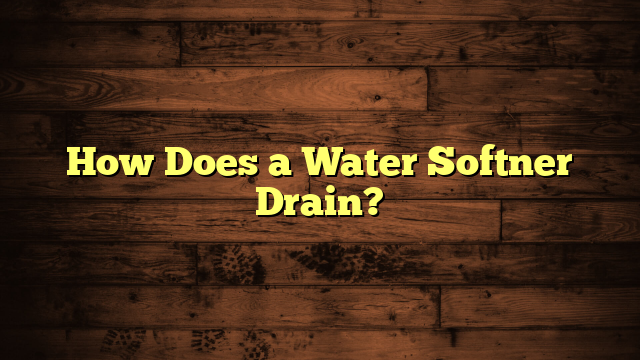How to Have Drinking Water With a Water Softner?
Imagine you've just installed a water softener to ease the stubborn hard water issues in your home, but now you're wondering about the safety of your drinking water. While softeners can improve water quality by reducing mineral buildup, they may also increase sodium levels, posing potential risks for those on low-sodium diets. This raises important questions about how to guarantee your drinking water remains safe and palatable. What practical steps can you take to maintain water quality while enjoying the benefits of softened water?
Key Takeaways
- Install a reverse osmosis system after the water softener to remove excess sodium and improve drinking water quality.
- Consider using potassium-based softeners as an alternative to reduce sodium content in softened water.
- Regularly test your water quality to ensure it meets health standards and contains essential minerals.
- Balance softened water usage with unsoftened water for drinking and cooking to maintain mineral intake.
- Stay informed about local water quality reports and monitor any changes that might affect your drinking water safety.
Understanding Water Softeners
A water softener is a system designed to remove minerals like calcium and magnesium that cause hardness in your water. Understanding how this process works is vital if you want to appreciate the softening benefits it provides.
Water chemistry plays an important role in this transformation. When you install a water softener, it typically uses a process called ion exchange, where hard minerals are replaced with sodium ions. This not only makes your water softer but also protects your plumbing and appliances from scale buildup.
You might notice a few immediate benefits after softening your water. For instance, soaps and detergents lather better, and you'll find that your skin feels softer after a shower.
Furthermore, your clothes will likely feel fresher and last longer, thanks to reduced mineral deposits. The improved water quality can also enhance the taste of your beverages and meals, as softer water often allows flavors to shine through without interference from harsh minerals.
The Safety of Softened Water
When considering the safety of softened water, many homeowners wonder about the sodium content added during the softening process. Typically, water softeners exchange calcium and magnesium ions for sodium ions. This can lead to a slight increase in sodium levels, which raises health concerns for individuals on sodium-restricted diets. However, the amount of sodium added is usually minimal—often less than what you'd find in a slice of bread.
If you're worried about softened water affecting your health, it's crucial to recognize that studies show it's generally safe for most people. The increased sodium content may not be significant enough to pose a risk unless you have specific health conditions, such as hypertension or heart disease.
If you're among those individuals, you might consider installing a reverse osmosis system or opting for potassium-based softeners.
Ultimately, softened water is safe for drinking and cooking for the majority of the population. It's always wise to consult with your healthcare provider if you have specific health concerns.
Types of Water Softeners
When it comes to water softeners, you'll find a couple of popular types that can suit your needs.
The ion exchange process is a common method that effectively reduces hard minerals, while salt-based systems are widely used for their efficiency.
Understanding these options will help you choose the right water softener for your home and guarantee that your drinking water remains pure.
Ion Exchange Process
Water softeners primarily operate through the ion exchange process, which efficiently removes hard minerals from your water supply. This process involves swapping out the calcium and magnesium ions, which cause hardness, with sodium ions.
When water enters your softener, it flows through a resin bed filled with tiny beads coated in sodium. As hard water passes through, the resin captures the hard minerals, releasing sodium ions into the water instead.
You might wonder how this impacts water impurities. The ion exchange method not only softens water but also reduces other impurities, improving overall water quality. As the hard minerals are trapped in the resin, they're prevented from entering your home's plumbing system, which can lead to scale buildup and other issues.
When the resin beads become saturated with hard minerals, the system undergoes a regeneration cycle, where a salt solution flushes the beads, replacing the captured ions with fresh sodium.
This process guarantees your water remains soft and free from harmful impurities, making it more suitable for drinking and household use. Ultimately, understanding the ion exchange process helps you appreciate how your water softener enhances your daily life.
Salt-Based Systems
Salt-based systems, commonly known as traditional water softeners, stand out for their effectiveness in tackling hard water issues. These systems utilize the ion exchange process, replacing hard minerals like calcium and magnesium with sodium ions.
While they're efficient, it's crucial to reflect on the implications of increased salt consumption in your water supply and its potential health implications.
When you're thinking about using a salt-based softener, keep these points in mind:
- Sodium Levels: The sodium added can impact your dietary intake, especially if you're on a low-sodium diet.
- Taste: Some people notice a salty taste in their softened water, which mightn't be desirable for drinking or cooking.
- Water Quality: Softened water may not be suitable for watering certain plants, as the sodium can affect soil quality.
- Regeneration Cycle: These systems require regular maintenance to regenerate the resin, which can involve more salt usage.
Understanding these factors will help you make an informed decision about whether a salt-based system fits your needs while still weighing your health and water quality.
Maintaining Water Quality
Maintaining water quality is critical when you've got a water softener at home.
While softened water can improve taste and reduce scale buildup, it can also affect certain minerals your body needs.
That's why integrating a good filtration system is necessary to guarantee you're drinking clean, healthy water without missing out on important nutrients.
Softened Water Effects
When you install a water softener, you might wonder how softened water affects your drinking quality. Understanding both the benefits and drawbacks of softened water can help you make informed decisions about your drinking water.
Softened water benefits:
- Reduces scale buildup in pipes and appliances, extending their lifespan.
- Improves the taste of food and drinks by enhancing water flavor.
- Makes cleaning easier by reducing soap scum and mineral deposits.
- Can lead to softer skin and hair when used for bathing.
Softened water drawbacks:
- Higher sodium content, which may not be suitable for those on low-sodium diets.
- Some people may notice a slippery feel, which can be off-putting.
- It may not be ideal for watering plants, as some plants prefer hard water.
- Drinking softened water may not provide essential minerals like calcium and magnesium.
Ultimately, balancing the softened water benefits against the drawbacks is essential for maintaining water quality.
Consider your household's needs and consult a professional if you have concerns about your drinking water's quality after installing a water softener.
Filtration System Importance
While softened water offers several advantages, it can also lack certain minerals that contribute to overall water quality. That's where a good filtration system comes into play. By integrating effective filtration techniques, you can enhance the quality of your drinking water. These systems help remove impurities and contaminants that may linger in softened water, guaranteeing you get clean, safe water for consumption.
Different purification methods, such as reverse osmosis or carbon filtration, can also help restore essential minerals that softened water might miss. These systems not only improve taste but also provide a healthier drinking option. You'll want to assess your specific needs and choose a filtration system that best suits your household.
Moreover, maintaining your filtration system is vital. Regularly changing filters and checking for any clogs or malfunctions will keep your water quality high. It's important to stay proactive about your water safety, as this guarantees you and your family enjoy the benefits of both softened and purified water.
Choosing the Right System
Choosing the right water softener system can greatly impact both your water quality and your home's plumbing. Understanding your water hardness is essential in the system selection process. You want a system that efficiently addresses the mineral content in your water while providing clean drinking water.
Here are some key factors to take into account:
- Water Hardness Level: Test your water to determine how hard it is. The higher the hardness, the more robust your system needs to be.
- System Type: Choose between salt-based and salt-free systems based on your lifestyle and preferences.
- Capacity: Verify the system can handle your household's water usage. An undersized unit won't effectively soften your water.
- Maintenance Requirements: Look for a system that fits your maintenance willingness; some require more frequent upkeep than others.
Alternatives to Water Softeners
There are several effective alternatives to traditional water softeners that can help you manage hard water without the use of salt. One popular option is reverse osmosis. This system uses a semi-permeable membrane to filter out impurities, including minerals that cause hardness. By installing a reverse osmosis unit, you can enjoy clean, soft water right from your tap.
Another great choice is water distillation. This process involves boiling water and then collecting the steam, which leaves behind minerals and contaminants. The result is pure, soft water that's safe for drinking and cooking. Distillation systems can be compact and easy to use, making them an excellent option for households with limited space.
You might also consider using a descaling system. These systems use electronic or magnetic fields to alter the properties of minerals in your water, preventing them from adhering to surfaces and appliances. While they don't remove hardness minerals, they can reduce scaling.
Each of these alternatives provides a unique solution to hard water issues. By exploring these options, you can find the right fit for your home, ensuring access to quality drinking water without relying on traditional water softeners.
Tips for Safe Drinking Water
Managing hard water is just one part of guaranteeing the safety and quality of your drinking water.
To truly enjoy the health benefits of clean water, consider implementing effective water purification methods. Here are some tips to keep your drinking water safe:
- Install a water filter: Choose a filter that removes contaminants and works well with your water softener.
- Regularly check your softener: Verify it's functioning properly and replace salt as needed to maintain efficiency.
- Test your water: Conduct regular water quality tests to identify any harmful substances or imbalances.
- Stay informed: Keep up with local water quality reports to understand any potential risks in your area.
Frequently Asked Questions
Can I Drink Softened Water Straight From the Tap?
You can drink softened water straight from the tap, but consider health concerns. The sodium levels might be higher than in regular water, which could affect those on low-sodium diets or with certain health issues.
Does Softened Water Taste Different From Regular Water?
Softened water taste can differ from regular water due to its altered mineral content. You might notice a smoother texture, but some prefer the crispness of regular water. It's all about personal preference and taste!
How Does a Water Softener Affect Cooking?
Imagine your favorite recipe without its rich flavors. A water softener can enhance cooking efficiency by improving water absorption, helping ingredients meld better. However, it may alter the taste slightly, so balance is essential.
Is There a Difference Between Softened and Filtered Water?
Yes, there's a difference. Softened water benefits include reduced mineral buildup, while water filtration methods remove contaminants. You'll enjoy cleaner taste and improved quality with filtered water, despite the advantages of softened water in other areas.
Can I Use Softened Water for Making Baby Formula?
You'd think using softened water for baby formula is safe, but it's vital to take into account baby formula safety. Softened water can have benefits, yet always consult your pediatrician to guarantee your little one's health stays excellent.
Conclusion
To sum up, enjoying safe drinking water with a water softener is entirely possible with a few smart choices. By considering options like reverse osmosis systems or dedicated filtration units, you can keep your water both soft and safe. Regular maintenance of your softener and periodic water testing will guarantee you're sipping on quality H2O. With these steps, you can have the best of both worlds—softened water that tastes good and is good for you!







